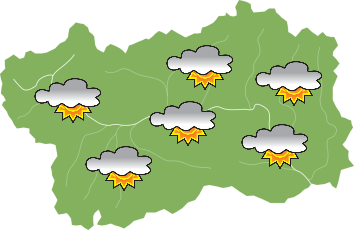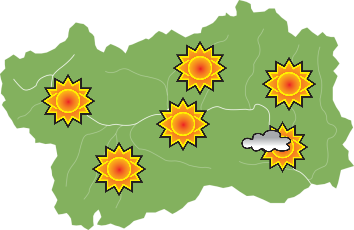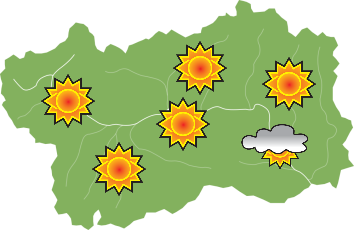Description
The village of Bard, a site that is dense with history and culture, boasts not only architectural beauty (the Fort of the same name, the courtly homes) but also praiseworthy landscape aspects. From a morphological point of view, the area in front of the suburb consists of large rocky humps which reveal the signs of the erosive action of the Balteo glacier, which, up to approximately 10,000 years ago, flowed along the main axis of the valley, filling it with powerful depths of ice.
You can observe various geological phenomena at the Bard geological site: the results of a landslide, erratic boulders, potholes, roches moutoneés as well as examples of rock art.
The Bard landslide of 1912 may be linked to a massive collapse, the volume of which is estimated to be 160,000 m3. It consists of large rocky cubic and prismatic shaped blocks. This event is the most recent testimony of landslide activity that is certainly older and does not only interest the site indicated.
Erratic boulders are blocks of stone of metric dimensions transported by the glacier even for kilometres and then deposited during the withdrawal phase. This process is also said to justify the presence of rocky blocks with a different composition with respect to the sub-layer on which they lie.
The potholes are fossil forms shaped by the abrasive action of the waters full of debris originating from the glacier during the regressive phase. Given the turbulent movement and the effect of the mechanical processes exercised by the continuous impact, the stones transported by the waters of the sub-glacial river act like drills, creating enormous cavities.
The roche moutonée originate from the pressure exercised by the glacial mass and the grinding action of the noteworthy quantities of debris that shaped the sub-layer, moulding the roche moutonée, lengthened according to the movement direction of the glacier: rounded on top and on the side facing uphill, irregular below.
There is much doubt surrounding the meaning of the rock incisions of Bard. The “coppelle”, small cavities dug out of the rock, probably dating back to the Bronze age, are said to be reference points for maps. The snake, dating from 3000-2700 B.C. seems to recall the symbol of male fertility. The particularly elongated shiny section, known as the “women’s slide”, was probably formed during the course of the centuries as the result of a female fertility propitiatory practice consisting of sliding down the rock in a sitting position.
How to get there
- By car: from the Pont-Saint-Martin motorway exit, take the S.S. 26 in the direction of Donnas.
- By train : Pont-Saint-Martin train station, then bus in direction Aosta, stop in Bard.
The visit
Attention!
Since it’s not possible to enclose the area, the access is free, at one’s own risk.
Suitable footwear (trekking boots) is necessary as it is an outdoor path, not traced and in some parts slippery.
Furthermore, it is advisable to keep a certain distance from the mouth of the marmitte dei giganti, to avoid falls.










